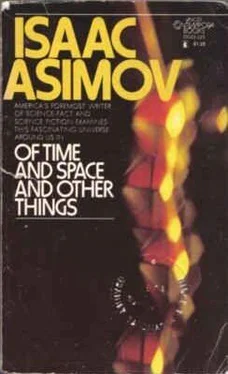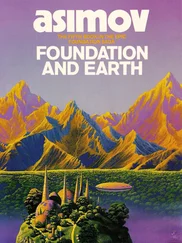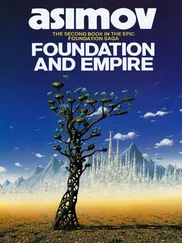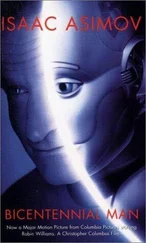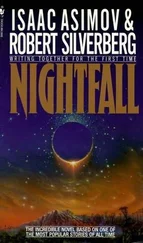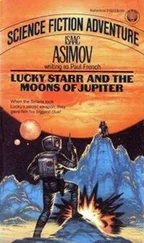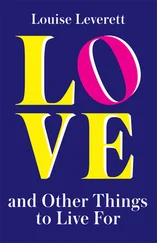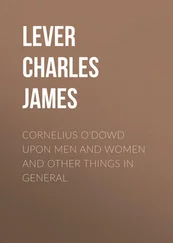Isaac Asimov - Of Time and Space and Other Things
Здесь есть возможность читать онлайн «Isaac Asimov - Of Time and Space and Other Things» весь текст электронной книги совершенно бесплатно (целиком полную версию без сокращений). В некоторых случаях можно слушать аудио, скачать через торрент в формате fb2 и присутствует краткое содержание. Год выпуска: 1972, ISBN: 1972, Издательство: Lancer Books, Жанр: Прочая научная литература, на английском языке. Описание произведения, (предисловие) а так же отзывы посетителей доступны на портале библиотеки ЛибКат.
- Название:Of Time and Space and Other Things
- Автор:
- Издательство:Lancer Books
- Жанр:
- Год:1972
- ISBN:ISBN: 0-447-33023-3
- Рейтинг книги:4 / 5. Голосов: 1
-
Избранное:Добавить в избранное
- Отзывы:
-
Ваша оценка:
- 80
- 1
- 2
- 3
- 4
- 5
Of Time and Space and Other Things: краткое содержание, описание и аннотация
Предлагаем к чтению аннотацию, описание, краткое содержание или предисловие (зависит от того, что написал сам автор книги «Of Time and Space and Other Things»). Если вы не нашли необходимую информацию о книге — напишите в комментариях, мы постараемся отыскать её.
Of Time and Space and Other Things — читать онлайн бесплатно полную книгу (весь текст) целиком
Ниже представлен текст книги, разбитый по страницам. Система сохранения места последней прочитанной страницы, позволяет с удобством читать онлайн бесплатно книгу «Of Time and Space and Other Things», без необходимости каждый раз заново искать на чём Вы остановились. Поставьте закладку, и сможете в любой момент перейти на страницу, на которой закончили чтение.
Интервал:
Закладка:
Furthermore, once every 291/2 days, there, would be a full Moon, when the Moon was precisely on the side op posite to that of the Sun so that we would see its entire visible hemisphere lit by the Sun. But at that time the Moon should pass into the Eartb's shadow and there would be a total eclipse of the Moon.
AR this does not happen-every 291/2 days because the plane of the Moon's orbit about the Earth does not coincide with the plane of the Earth's orbit about the Sun. The two planes make an angle of 5'8' (or 308 minutes of arc) '
The two great circles, if marked out on a celestial sphere would be set off from each other at a slight slant. They would cross at two points, diametrically opposed and would be separated by a maximum amount exactly half way between the crossing point. (The crossin2 points are called "nodes," a Latin word meaning "knots")
If you have trouble visualizing this, the best thing is to get a basketball and two rubber bands and try a few ex periments. If you form a great circle of each rubber band (one that divides the globe into two equal halves) and make them non-coincident, you will see that they cross each other.in the manner I have described.
At the points of maximum separation of the Moon's path from the ecliptic, the angular distance between them is 308 minutes of are. This is a distance equal to roughly ten times the apparent diameter of either the Sun or the Moon. This means that if the Moon happens to overtake the Sun at a point of maximum separation, there will be enough space between them to fit in nine circles in a row, each the apparent size of Moon or Sun.
In most cases, then, the Moon, in overtaking the Sun, will pass above it or below it with plenty of room to spare, and there will be no eclipse.
Of course, if the Moon happens to overtake the Sun at a point near one of the two nodes, then the Moon does get into the way of the Sun and an eclipse takes place.
This happens only, as I said, from two to five times a year.
If the motions of the Sun and Moon are adequately analyzed mathematically, then it becomes easy to predict when such meetings will take place in the future, and when they have taken place in the past, and exactly from what parts of the Eaith's surface the eclipse will be visible.
Thus, Herodotus tells us that the Ionian philosopher, Thales, predicted an eclipse that came just in time to stop a battle between the Lydians and the Medians' (With such a sign of divine displeasure, there was no use going on with the war.) The battle took place in Asia Minor some time after 600 B.c., and astronomical calculations show that a total eclipse of the Sun was visible from Asia Minor on May 28, 585 B.c. This star-crossed battle, there fore, is the earliest event in history which can be dated to the'exact day.
The ecliptic served early mankind another purpose besides acting as a site for eclipses. It was an eternal calendar, inscribed in the sky.
The earliest calendars were based on the circuits of the Moon, for as the Moon moves about the sky, it goes through very pronounced phase changes that even the most casual observer can't help but notice. The 291/2 days it takes to go from new Moon to new Moon is the "synodic month" (see Chapter 6).
The trouble with this system is that in the countries civilized enough to have a calendar, there are important periodic phenomena (the flooding of the Nile, for in stance, or the coming of seasonal rains, or seasonal cold) that do not fit in well with the synodic month, There weren't a whole number of months from Nile flood to Nile flood. The average interval was somewhere between twelve and thirteen months.
In Egypt it came to be noticed that the average intervals between the floods coincided with one complete Sun-circuit (the year). The result was that calendars came to consist of years subdivided into months. In Babylonia and, by dint of copying, among the Greeks and Jews, the months were tied firnay to the Moon, so that the year was made up sometimes 'of 12 months and sometimes of 13 months in a complicated pattern that repeated itself every 19 years. This served to keep the years in line with the seasons and the months in line with the phases of the Moon. However, it meant that individual years were of different lengths (see Chapter 1).
The Egyptians and, by dint of copying, the Romans and ourselves abandoned the Moon and made each year equal in length, and each with 12 slightly long months'
The "calendar month" averaged 301/2 days long in place of the 291/2. days of the synodic month. This meant the months fell out of line with the phases of the Moon, but mankind survived that.
The progress of the Sun along the ecliptic marked off the calendar, and since the year (one complete circuit) was divided into 12 months it seemed natural to divide the ecliptic into 12 sections. The Sun would travel through one section in one month, through the section to the east of that the next month, through still another section the third month, and so on. After 12 months it would come back to the first section.
Each section of the ecliptic has its own pattern of stars, and to identify one section from another it is the most natural thing in the world to use those patterns. If one section has four stars in a roughly square configuration it might be called "the square"; another section might be the "V-shape," another the "large triangle," and so on.
Unfortunately, most people don't have my neat, geo metrical way of thinking and they tend to see complex figures rather than simple, clean shapes. A group of stars arranged in a V might suggest the head and homs of a bull, for instance. The Babylonians worked up such imaginative patterns for each section of the ecliptic and the Greeks borrowed these giving each a Greek name. The Romans borrowed the iist next, giving them Latin names, and passing them on to us.
The following is the list, with each name in Latin and in English: 'I) Aries, the Ram; 2) Taurus' the Bull; 3) Gemini, the Twins; 4) Cancer, the Crab; 5) Leo, the Lion; 6) Virgo, the Virgin; 7) Libra, the Scales; 8) Scorpio, the Scorpion; 9) Sagittarius, the Archer; 10) Capricomus, the Goat; 11) Aquarius, the Water-Carrier; 12) Pisces, the Fishes.
As you see, seven of the constellations represent ani mals. An eighth, Sagittarius, is usually drawn as a centaur, which may be considered an animal, I suppose. Then, if we remember that human beings are part of the animal kingdom, the only strictly nonanimal constellation is Libra.
The Greeks consequently called this band of constellations o zodiakos kyklos or "the circle of little animals," and this has come down to us as the Zodiac.
In fact, in the sky as a whole, modem astronomers recognize 88 constellations. Of these 30 (most of them constellations of the southern skies' invented by modems) represent inaniinate objects. Of the remaining 58, mostly ancient, 36 represent mammals (including 14 human beings), 9 represent birds,, 6 represent reptiles, 4 represent fish, and 3 represent arthropods. Quite a heavenly zoo!
Odd, though, considering that most of the constellations were invented by an agricultural society, that not one represents a member of the plant kingdom. Or can,that be used to argue that the early star-gazers were herdsmen and not farmers?
The line of the ecliptic is set at an angle of 231/2 ' to the celestial equator (see Chapter 3) since, as is usually stated, the Earth's axis is tipped 23V2'.
At two points, then, the ecliptic crosses the celestial equator and those two crossing points are the "equinoxes" ("equal nights"). When the Sun is at those crossing points, it shines directly over the equator and days and nights are equal (twelve hours each) the world over. Hence, the name.
One of the equinoxes is reached when the Sun, in its path along the ecliptic, moves from the southern celestial hemisphere into the northern. It is rising higher in the sky (to us in the Northern Hemisphere) and spring is on its way. That, therefore, is the "vernal equinox," and it is on March 20.
Читать дальшеИнтервал:
Закладка:
Похожие книги на «Of Time and Space and Other Things»
Представляем Вашему вниманию похожие книги на «Of Time and Space and Other Things» списком для выбора. Мы отобрали схожую по названию и смыслу литературу в надежде предоставить читателям больше вариантов отыскать новые, интересные, ещё непрочитанные произведения.
Обсуждение, отзывы о книге «Of Time and Space and Other Things» и просто собственные мнения читателей. Оставьте ваши комментарии, напишите, что Вы думаете о произведении, его смысле или главных героях. Укажите что конкретно понравилось, а что нет, и почему Вы так считаете.
